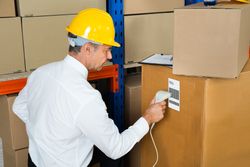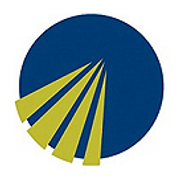
Bar codes are more than just a string of numbers affixed to products during the assembly packaging process. These identifiers link back to crucial information about the item, including a description, inventory tracking data, and pricing. Below, learn more about the crucial role they play in modern business.
History
In 1951, bar codes were invented and patented by Norman Joseph Woodland and Bernard Silver. The idea is based on Morse code, with sequences of bars—each of varying degrees of thickness—used instead of the customary tapping sequences to deliver information.
It wasn't until the late 1960s, however, that bar codes were first widely utilized. The railroad industry used them to track railroad cars—a project that was eventually abandoned. But their usefulness could not be denied. The now-customary UPC (Universal Product Code) was introduced in the early 1970s on a pack of chewing gum; soon after, they were standard in supermarket products. Now, they are used in everything from medical devices to building components.
How They're Made
Bar codes are made by designing a series of black and white bars. The bars represent different text based on a pre-determined algorithm. The bar code is attached to the product during assembly packaging. When a code is read, the scanner translates the data from the bars using the algorithm to supply you with the desired information about the product.
Types
 1D is the most popular kind of bar code in assembly packaging. It holds between eight and 25 characters. By contrast, 2D ones can hold up to 2,000 characters and contain much more data. The stored information can be used in everything from sales and inventory to supply chain management and marketing. As the name implies, 2D codes have a more two-dimensional look than standard 1D codes. They require a special scanner to be read.
1D is the most popular kind of bar code in assembly packaging. It holds between eight and 25 characters. By contrast, 2D ones can hold up to 2,000 characters and contain much more data. The stored information can be used in everything from sales and inventory to supply chain management and marketing. As the name implies, 2D codes have a more two-dimensional look than standard 1D codes. They require a special scanner to be read.
Pacific Integrated Manufacturing in San Diego County, CA, has been offering assembly packaging services for more than 15 years. They specialize in the creation, assembly, and logistics of thermoplastic components, custom automation cells, and finished medical devices. To learn more about their offerings, visit them online. Call (619) 921-3464 with questions.
About the Business
Have a question? Ask the experts!
Send your question

